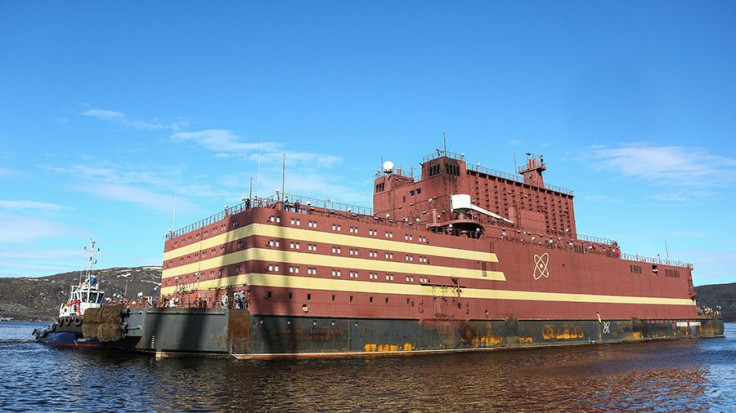Chernobyl On Ice: Russia To Tow Floating Nuclear Power Plant To The Arctic

Kremlin is ready to tow to the Arctic the world’s first floating nuclear power station with a capacity to supply 70 MW, which is sufficient for the energy needs for a city with 200,000 residents.
The Akademik Lomonosov is equipped with facilities to transfer energy generated from the its nuclear reactor to settlements and companies extracting minerals and precious stones in the Chukotka region in northeast Russia.
Earlier reports described the floating nuclear power plant, a product of the Russian state-run nuclear power company Rosatom, as a 144-by-30-meter barge, which contains two reactors with two 35 megawatt nuclear reactors; similar to those used to power icebreaker ships.
The CNN said about two million Russians live near the Arctic coast in villages and towns, settlements only accessible by aircraft or a ship and that too in good weather. Moscow has prioritized this region because it generates about 20 percent of the country’s GDP. Moreover, Russia plans to access the Arctic’s of oil and gas.
An expert at the Institute for Energy and Finance in Moscow, Sergei Kondratyev applauded the floating nuclear power plant. Kondratyev said the idea is to have low-capacity, mobile power plants that can be used in the Russian Arctic where large amounts of electricity aren’t needed. He explained that the construction of a conventional power station would be complicated and costly. “The alternatives are coal, gas and diesel," Kondratyev said. "But diesel is very costly, while gas needs to be delivered as liquefied natural gas or LNG.” Experts agree that floating nuclear power plants could help supply energy to remote areas with long-term commitments.
However, this has also raked up criticizm from environmentalists and who have dubbed it the "floating Chernobyl" and "Chernobyl on ice," drawing its likeness to the 1986 nuclear accident in which about 30 people died due to acute radiation poisoning.
Greenpeace, an international environmental advocacy, has expressed concerns that the reactors will endanger the environment. It gave examples of the Chernobyl accident and the 2011 Fukushima accident in Japan that was triggered by an earthquake.

But this is not the first time that a nuclear reactor will be put to the sea. It has been happening since 1955 with the likes of the submarine USS Nautilus. The U.S. Navy has over 80-nuclear-powered warships including submarines and aircraft carriers, and Russia’s has its own nuclear-powered fleet including icebreakers.
© Copyright IBTimes 2024. All rights reserved.





















